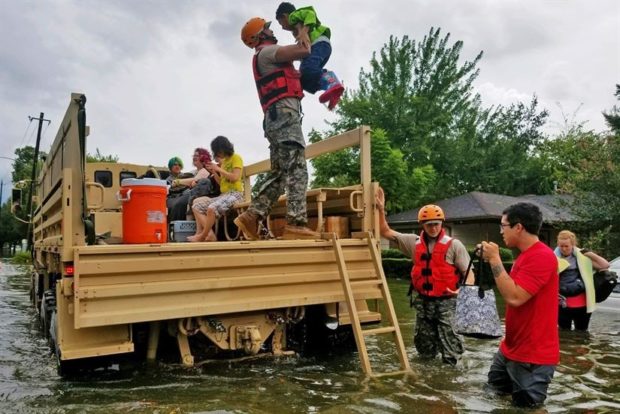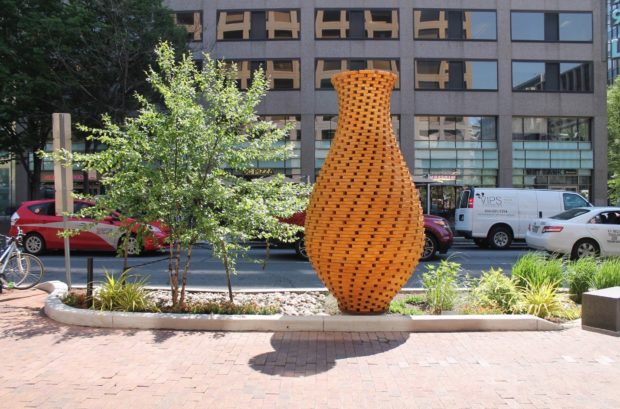We have much more to do and your continued support is needed now more than ever.
Why Cities Matter in the Climate Fight

President Trump’s decision to withdraw the United States from the Paris Climate Agreement has elicited a strong response from cities across America, many of whom remain committed to meeting the U.S.’s greenhouse gas emissions targets. This overwhelming urban response indicates a vital role for U.S. cities in the fight against climate change.
More than half of the world’s population currently live in cities, with 70% of America’s population concentrated in urban areas. As the world’s population continues to grow – with an estimated 11 billion people by 2100 – much of the population is projected to live in urban areas.
From a climate standpoint, this is important for two reasons: first, many U.S. cities are highly vulnerable to the impacts of climate change; second, cities require large amounts of energy to support their infrastructure and residents, which contributes to greenhouse gas emissions. As a result, America’s cities have an urgent need and opportunity to adapt to climate change impacts as well as a responsibility to mitigate their carbon footprints.
The Adaptive City
Sea-level rise, extreme storm events, and increases in flooding are already having tremendous negative effects on some of our most vibrant coastal cities. Over the past decade, for example, Miami’s sea level has risen by around 3.5 inches. While this does not sound like much, for Miami residents this rise has contributed to higher tide levels and more flash flood incidents than previously seen in the past few decades. This is affecting the city’s infrastructure and creating severe public safety risks for the city’s residents.

But Miami is not unique. Since the 1950s, New Orleans has experienced a 62% increase in heavy downpours, leading to more extreme flood incidents that are certainly not helped by the nearly 2,000 square miles of land Louisiana has lost due in part to sea-level rise. New York City, still recovering from the effects of Hurricane Sandy, is increasingly vulnerable to these types of extreme storms. Even non-coastal cities are expected to be hit hard by climate impacts, with cities such as Kansas City, Louisville, Lincoln, and Columbus projected to experience high temperature increases and extreme precipitation changes.
Perhaps the most striking recent example of city vulnerability is the devastation brought on by tropical storm Harvey in Houston. With more than 40 inches of rain in the Houston area, and a record-shattering 51.88 inches at Cedar Bayou, Harvey has brought unprecedented catastrophic flooding to the region.
With America’s cities vulnerable to climate change impacts, the need to implement adaptation strategies is strong. Miami is already embarking on a multi-million dollar infrastructural project to address the rising seas and flooding, while New York City is considering a variety of adaptation measures, such as flood-resistant building materials and special drainage systems. Cities can also utilize green infrastructure practices – such as rainwater gardens, green roofs and urban tree canopies – to manage storm water and address the high temperatures associated with the urban heat island effect.
Not only do these types of practices help improve urban climate resilience, they also provide added value for wildlife by creating, connecting or improving urban habitats.

The Carbon City
While cities may be vulnerable to climate impacts, they are also a part of the climate problem when factoring in their energy and emissions profile. Some estimates suggest cities contribute over 70% of global CO2 emissions.

However, the potential for cities to follow a low-carbon development pathway is strong, particularly when it comes to climate-resilient urban infrastructure. One way America’s cities can reduce their emissions is to improve urban public transportation and decrease American dependence on motor vehicles. As of 2015, around 27% of the U.S.’s total GHG emissions are attributed to the transportation sector.
By incorporating green public transportation strategies, such as bike lanes, electric buses and rail systems, cities can play a large role in reducing transportation based GHG emissions. Currently, the U.S. has over 300 zero emission buses operating across the country, including in cities such as Louisville, Chicago and Los Angeles. Municipal bike share systems are increasingly popular in the U.S., with cities like New York and Washington D.C. expanding bicycle stations, allowing residents to rent bikes across the city.
Cities are also at an advantage in that they can reduce travel demand through high-density, mixed use urban planning and design. This means residents have access to daily services, such as grocery stores, schools, and medical offices, without the need for a car.
Establishing building energy efficiency standards for new urban development, retrofitting existing buildings, and creating energy performance standards for lighting and appliances are three other key methods cities can employ to reduce emissions. Cities such as Austin, St. Paul and Philadelphia have embarked on ambitious energy efficiency programs ranging from commercial and residential building retrofits and efficiency standards, to utilizing alternative sources of energy such as municipal wood waste or biogas (methane) recovered from human waste.
Taken together, these types of strategies show that cities have a tremendous opportunity to reduce greenhouse gas emissions through robust climate policies and programs.

The City as a Climate Leader
In pledging their commitment to the Paris Climate Agreement, America’s cities have sent a strong signal to both the national and global community. Our nation needs to be engaged in the global fight against climate change to ensure that both people and wildlife thrive for generations to come.
By weaving climate change adaptation and mitigation strategies and programs into the urban fabric, U.S. cities can lead the way for climate action and set an example for what can be accomplished, one city block at a time.





















